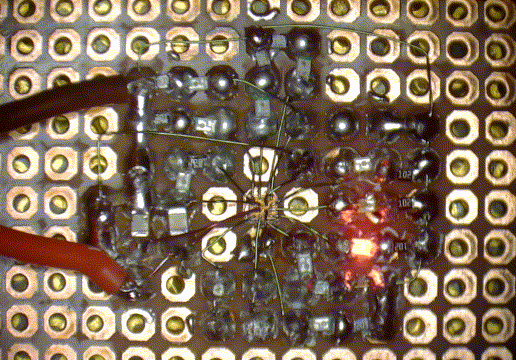Programming the chip
So programming is easy: download the SDK, put it in a directory, insert blink.c and go, right? Well, we're talking non-mainstream SoCs here, so it's not likely to be that easy. There's two problems: first of all, the SDK is available but needs one of two commercial C compiler packages to work (either IAR or Keil), and secondly programming the chip needs to be done either through one of those compiler packages or through a closed-source Windows-only program that uses a seemingly-undocumented programming protocol.
Luckily, this chip has a bog-standard ARM Cortex M0+ as its core, and that means a fair few things are standardized. Chips like this support SWD, a two-wire way of debugging anything running on the core, and e.g. OpenOCD has the capability to connect to that. For compilation, GCC has had an Arm compiler since forever, and as it also has Cortex M0+ functionality, it can be a good replacement for the costly commercial compilers.
The SDK still needed some wrangling to get to work under gcc. First of all, it has some specific defines and include file requirements that assume things from the compiler that gcc does not fulfill. Secondly, while gcc is a compiler, it's not a build system. The first problem can be solved by copying, hacking, and coming up myself with the required things that satisfy the SDKs requirements. The second issue is fixed by pressing good old GNU Make into service to handle building everything. The result is a 'SDK wrapper' that makes building programs from the SDK using FLOSS tools possible. You can grab it here if you're interested.
Secondly, we still need to program the flash. OpenOCD can happily connect to the chip using one of a plethora of available SWD debuggers, but it does not know about the integrated flash, or how to program it. The solution for this is to write a flash driver. Luckily, after machine-translation from Chinese, the translated docs are fairly readable, and it didn't take me long to add a slow-but-functional flash driver to OpenOCD. My modified version of OpenOCD is included in the SDK as a submodule, or you can fetch it here.
With that, I managed to finally write my blinkie:

And with that, I reached my goal: grab this tiny microcontroller and see if I can use it, even though documentation is in Chinese and the chip is in a miniscule package. I'm not planning to do anything with the other 6 chips I have yet, but knowing that I know how to handle them is a good addition to my mental toolbox.
« Prev 3
11 commentsCongratulations, you in fact did like bonding of your own IC :). Still makes me wonder if direct toner xfer can etch that one-layer layout acceptably to go without fab another ways.
Correction: https://jlcpcb.com/capabilities/Capabilities says that on single and double layer PCBs the minimum total via diameter is 0.6mm; on multilayer boards it's 0.4mm, with 0.1mm-thick ring and 0.2mm hole Your dry hole idea is intriguing, maybe reflow the chip and then blind-solder magnet wire into the hole, hoping that it'd wet and bond into the ball?
So maybe instead of a via, you just have a hole drilled through to a pad on the other side, and you solder a wire to that pad extending through the board, cut flush so the ball will sit on it. Effectively, a dead bug connection coming through the board.
@Nathan, the minimum via diameter is 0.4mm, plus the pad ring, and balls are 0.35mm apart so you can't put it under the ball
Ron: I work and live in China; our company makes Chinese products. My 'accusations' are 1. against closed source stuff, and 2. against posting everything in Chinese-only while the rest of the world tends to use English as the lingua franca. To be honest, I didn't intend it to read as me having an issue with the product purely because it's Chinese; I'll see if I can modify the article to reflect that.
Great write-up. It somewhat reminded me of 3 cent Padauk OTP MCU from China EEVblog 'discovered' in 2019.
Check out the MAXIM 32660. Available in a 16 pad WCSP. 1.6 x 1.6mm. With a Cortex M4, 96mhz, 256k FLASH and 128k RAM. Have used if in a commercial product.
I think a bit less negative and accusatory language, because it's a Chinese product, would look better for both the article and the author.
Could the pad for an interior ball double as a via?
Super congrats, this is beautiful...
Thank you for inspiring me to use OpenOCD to dump the flash of the HC32L110C6UA serving as the TuyaMCU chip in the Inkbird IBS-TH3 WiFi thermometer hygrometer. I connected only the two SWD pins, and not reset. They are accessible in the battery compartment. At first I was getting a lot of corrupted data, but after using the halt command, OpenOCD worked perfectly,